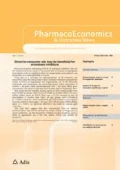The Institute for Clinical and Economic Review (ICER) has released information on two alternative pricing models for COVID-19 treatments to inform public debate of pricing for remdesivir [Gilead Sciences] and other potential future treatments.
The ICER has been working with external academic partners to develop the two ICER-COVID pricing models: a cost recovery approach and a traditional cost-effectiveness analyses approach. Initial non-peer-reviewed pricing analyses were undertaken using preliminary remdesivir data, with the models intended to track and evaluate future potential COVID-19 treatments. The ICER will regularly update the models as information and public input changes.
The cost recovery approach for the manufacturer estimates the minimum production costs for a course of treatment based on peer-reviewed calculation methods, and includes four conceptual elements: minimum cost of producing the final finished product; innovator-provided research and development costs; provision of research and development costs by the federal government; and additional profits beyond cost recovery. Data on cost of producing the final finished product for remdesivir were sourced from an article by Hill et al in the Journal of Virus Eradication, Footnote 1 which was rounded to $US10 for a 10-day treatment course. Research and development costs were set at zero in the base case recovery calculation, although the ICER notes that consideration would be given to including future costs of new clinical trials in the COVID-19 population.
Traditional cost-effectiveness analyses consider incremental health benefits and costs within the health system, with base-case model results based on the estimate of benefits seen in the Adaptive COVID-19 Treatment Trial (ACTT). Using a cost-effectiveness threshold of $US50 000, the initial ICER-COVID model suggested an approximate price of $4500 per treatment course based on the assumption of mortality benefit of a 10-day treatment course from the ACCT study findings. However, the ICER highlights that "in public health emergencies, and with such great clinical evidence uncertainty, cost-effectiveness analysis results should be viewed with caution" and "policy makers should consider lower thresholds to accommodate both the uncertainty and to maintain affordability for immediate broad use".
"The results of a cost recovery approach and a cost-effectiveness approach are going to produce very different pricing estimates", commented Steven D. Pearson, ICER's President. "We are releasing these estimates now, despite the fact that the evidence is highly uncertain and evolving, because now is the time when the public and policymakers should be actively debating how to link pricing to an overall platform to develop treatments for COVID-19. The consequential discussion about the tradeoffs and priorities involved with different pricing approaches cannot wait".
Notes
Hill A, et al. Minimum costs to manufacture new treatments for COVID-19. Journal of Virus Eradication: 30 Apr 2020.
Reference
Institute for Clinical and Economic Review. ICER Presents Alternative Pricing Models for Remdesivir as a Treatment for COVID-19. Internet Document : 1 May 2020. Available from: URL: https://icer-review.org/announcements/alternative_pricing_models_for_remdesivir/
Rights and permissions
About this article
Cite this article
ICER releases pricing models for potential COVID-19 treatments. PharmacoEcon Outcomes News 853, 1 (2020). https://doi.org/10.1007/s40274-020-6796-3
Published:
Issue Date:
DOI: https://doi.org/10.1007/s40274-020-6796-3

